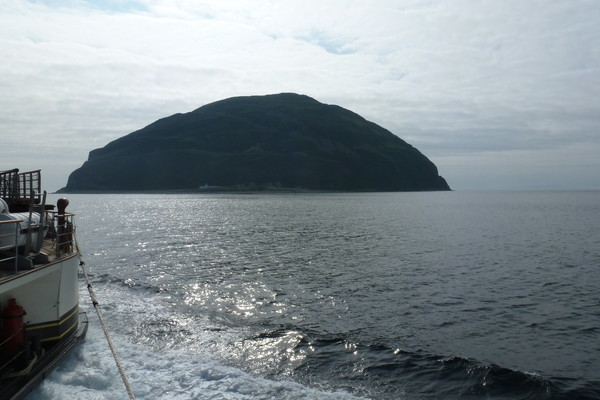Railways Architecture and Heritage in Scotland
By Theo Steel
The joining instructions for our Noble Caledonia cruise out of Oban told us to gather under the porte cochere (canopy) in front of Glasgow Central Station where a coach would pick us up to take us to Oban. This year’s cruise destinations in Scotland are covered in this note:
Glasgow Central
The canopy is one of the best and beautifully restored, the entrance gates too are an excellent example of West Scotland metalwork. Glasgow Central station is among the largest dozen for size and usage in the UK with 17 platforms and pre COVID use of 32m passengers per year, the busiest in Scotland. It is listed Grade A and is very highly regarded both architecturally and by customers.
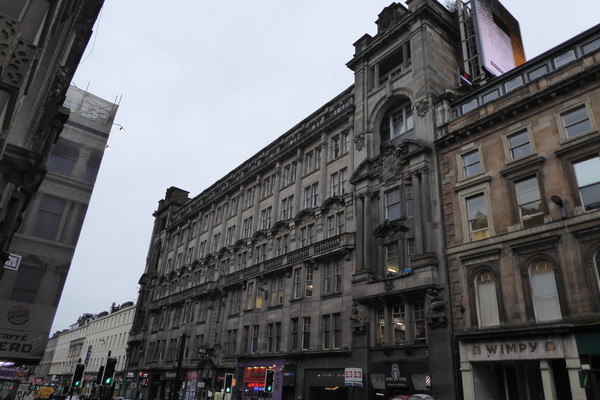
Glasgow Central Station
The Gordon Street frontage dates from 1874 and was designed by Robert Anderson. It comprises the station entrance on the level with the street and the large Central Hotel above.
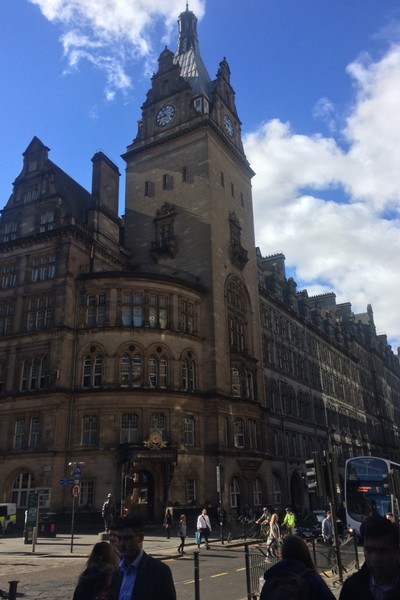
Grand Central Hotel
The concourse and Hope/Union Street flanks both have later buildings by James Miller, a prolific Glasgow architect in practice from 1880 to 1940; he was a contemporary of Rennie Mackintosh whose portfolio does not include any railway buildings. Miller with the Caledonian Railway engineer Mathieson was particularly associated with the Caledonian Railway with which he worked from 1889 to 1895 and all told designed over 40 stations between 1889 and 1919. These were mainly for the Caledonian but also for the North British and Glasgow and South Western Railways.
Miller’s practice designed Glasgow Hospital and a score of office buildings in Glasgow centre as well as Turnberry and Peebles Hydro hotels. His style was to client order and ranged from gothic, arts and crafts through Queen Anne to Classical with a little modernism thrown in latterly. Outside Glasgow he designed the Institute of Civil Engineers building in Westminster, in itself an indication of the high regard in which he was held, as well as part of the Cadbury complex in Birmingham.
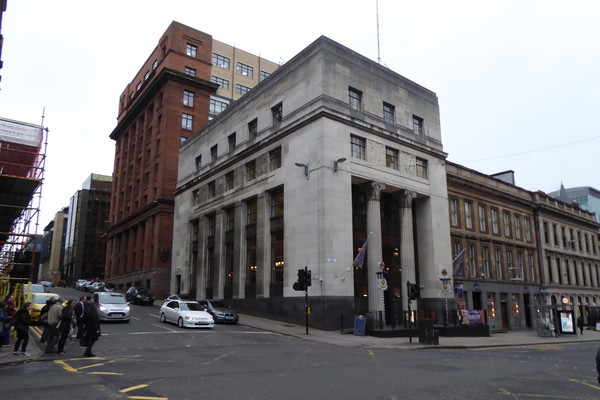
Miller’s office blocks
Glasgow Central Station internally has a distinctive series of wood clad buildings, added to recently and in total contrast to the grid road pattern around features gentle curves. The curved passages stem from visits to the USA by Mathieson and are designed to help handle crowds. The roof is late (1904) but features fine steelworks. Pre covid there were tours organised to visit parts of the station underneath or above the public areas. The Grand Central hotel even features a champagne bar overlooking the concourse.
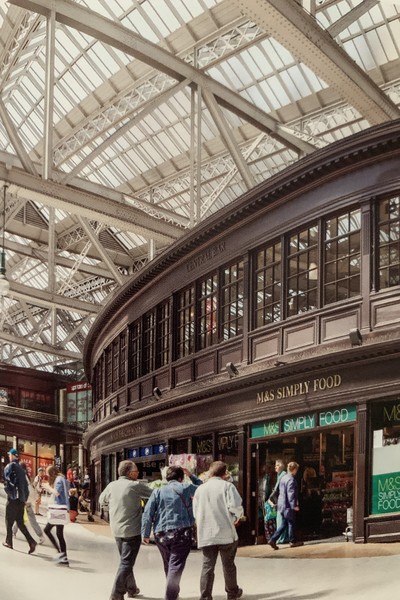
Inside Glasgow Central Station
The coach departure for the cruise was early in the afternoon and a walk around the nearby streets prior will pay dividends. Apart from the Rennie Mackintosh buildings, Miller is well represented. The original St. Enoch Glasgow subway station, now a cafe, is a Miller creation; there was a large station on the national rail network adjacent which has now become the St Enoch 1970’s shopping centre. Buchanan Street was another 1960’s station closure with the site subsumed into the University of Strathclyde.
Glasgow Queen Street Station is however thriving and has just been remodelled and opened up to link into St George’s Square seamlessly and visually. The trains to Oban leave from there. The station was designed in 1878 by James Carswell and features a fine arched train shed. It is again listed Grade A. I have yet to see it completed. The new build is on the site of a 1960’s extension to the North British hotel which unusually predates the railway. The completed rebuild has been entered in this year’s National Rail Heritage Awards (NRHA) competition. In contrast to Glasgow Central which is not so different from what it looked like 100 years ago (again a compliment to its designers) Queen Street looks much improved.
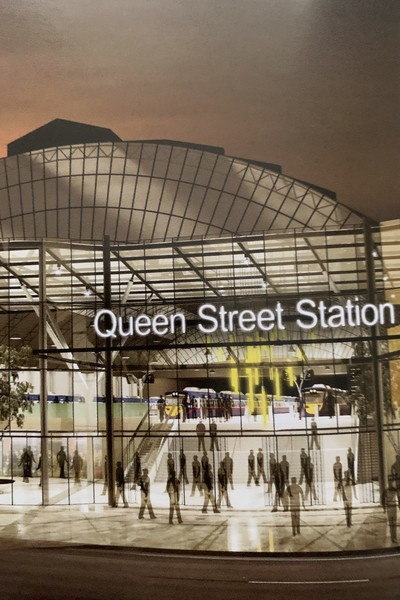
Queen Street Station (Artists Impression)
Wemyss Bay Station
While this is not (yet) on Noble Caledonia itineraries I can’t resist mentioning it! It was built by the Caledonian railway in 1903 to act as the rail /sea interchange to Rothesay from Glasgow. It was built on the grand scale and is a Mathieson/Miller creation. The station is featured on the cover of Sir Simon Jenkins book Britain’s 100 Best Railway stations, is Grade A listed and in common with Glasgow Central is one of only 10 he gives 5 stars to. Again, gentle curves are a key theme – this even applies to the large range of urinals which are originals!! The parties involved in the restoration deserve great credit and it was the winner of the National Rail Heritage overall award in 2017. There is a very active supporters’ group. The station is at the point where the Clyde turns south and becomes a Firth (estuary) and is very exposed, hence the enclosed facilities.
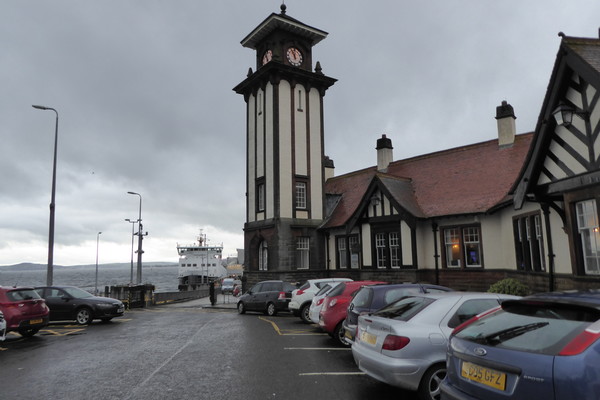
Wemyss Bay Station
There are hourly trains from Glasgow Central and it is well worth a visit. The supporters’ group tend the building lovingly, the floral displays are good and there is a nice Edwardian tearoom. That apart the trip includes some good views of the Clyde.
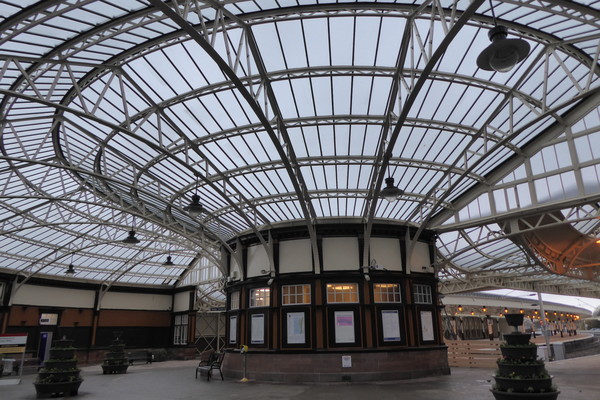
Wemyss Bay Station
Turnberry and Ailsa Craig
Alisa Craig
I note that a visit to Ailsa Craig is planned. I have done this trip out from Girvan on the Waverley paddle steamer, now happily back in service. The trip should also include a view of Turnberry Hotel (Trump Turnberry) built by the Glasgow and South Western Railway and opened in 1904 on land which was part of the then Chairman the Marquess of Ailsa’s estate and designed by James Miller. Until the 1930’s it was served by through sleeper coaches from St. Pancras.
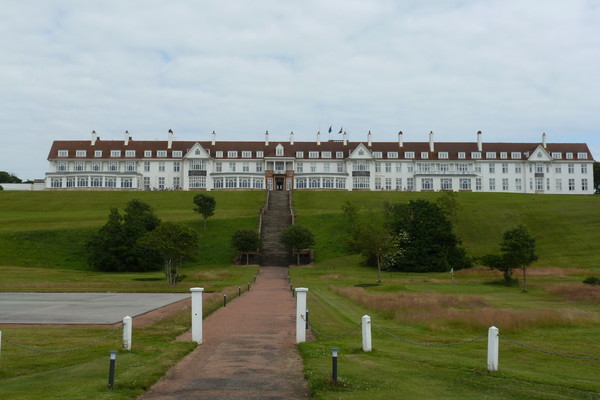
Turnberry Hotel
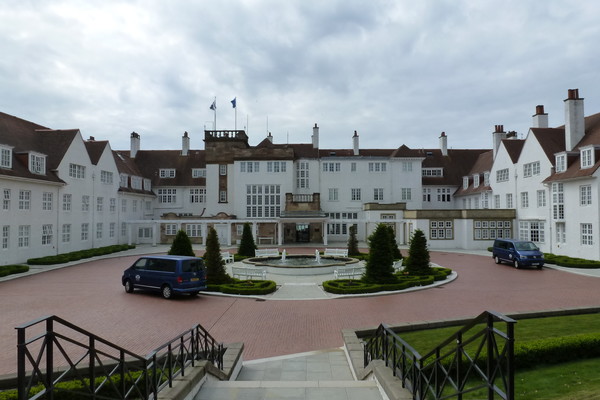
Turnberry Hotel
During the First World War it served as the No1 School of Aerial Gunnery and my grandfather was adjutant from 1916-9 having lost an eye on the Front. In the Second World War it was used for pilot training and believe it or not there are the remains of tarmacked runways under the golf courses. The hotel was in the British Rail collection until the 1980’s when it was sold on.
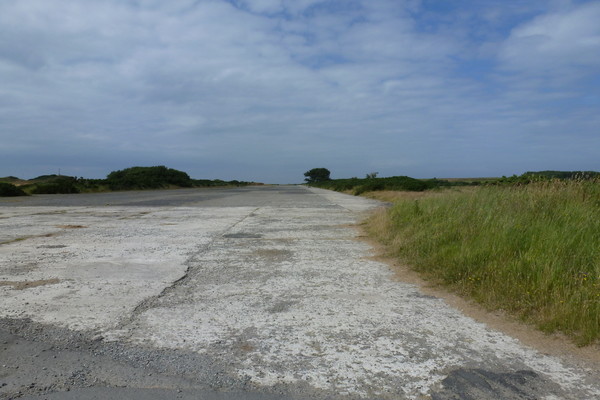
Runway
Margaret Morrell has written up the story which includes a lot of pictures of First World War crashes from albums in my archives. The saddest aspect is the fact that the War Memorial out on the headland lists 172 names of people known to have perished there in both Wars.
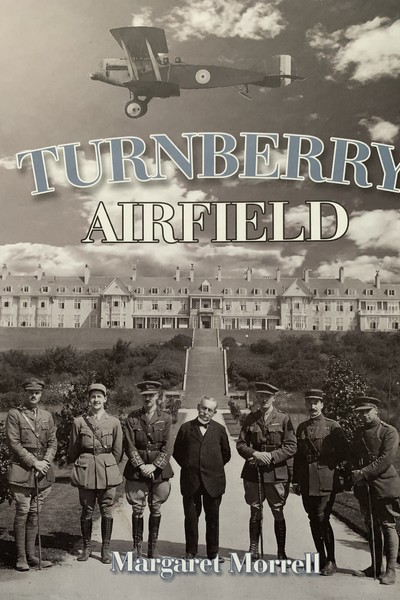
The Ailsa family home is Culzean Castle just north on the coast now in the hands of the National Trust for Scotland. Unbelievably President Eisenhower was granted a flat there after the 2nd World War.
Oban
The original railway to Oban was built by the Caledonian West from Dunblane passing through Callander to Crianlarich where it crossed the North British line from Glasgow to Fort William and Mallaig. It was closed east of Crianlarich in the 1960’s. Oban trains now run to Crianlarich up the West Highland line via Arrochar before branching West. The railway is well worth the ride but the coach trip is impressive. We went out of Glasgow on the south bank, over the Erskine Bridge along the West bank of Loch Lomond before striking west to Inverary. We did parallel the railway past Loch Awe and caught sight of the onetime rail and road bridge at Connel Ferry, now road only but built on the same principles as the Forth Railway Bridge and listed and designed in steel by Sir John Barrie. The station at Oban is 1980’s and fit for purpose.
Fort William
The railway was replanned in Fort William in the 1980’s to enable a road to be built and the station dates from then. It is in total contrast to the series of 12 “Swiss chalets” built along the West Highland line between 1894 and 1901 (north of Fort William). They are mostly to a standard style are often listed and have been repurposed – Corrour is a bunkhouse, Glenfinnan the West Highland Railway Museum. They were designed by James Miller. The ride from Fort William to Mallaig is spectacular and can be done on the Jacobite steam train. It includes 6 listed viaducts including Glenfinnan, an early concrete Construction from ‘Concrete Bob” McAlpine.
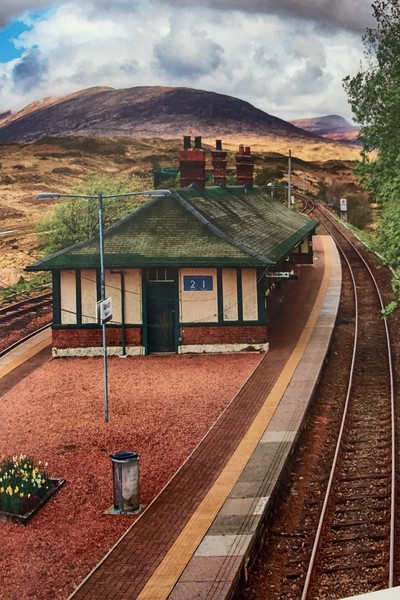
Rannoch
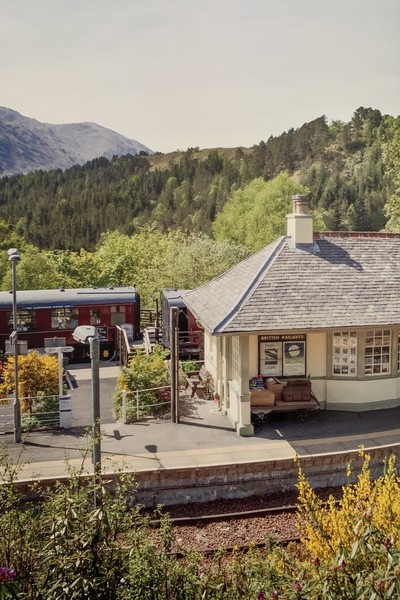
Glenfinnan
The route features in Harry Potter films and has become increasingly popular.
Scrabster
The nearest railway to Scrabster is at Thurso, the most northerly station in the UK. It was part of the Highland Railway, although the route was backed by the Duke of Sutherland who had his own private saloon for rail travel and a private station at Dunrobin to serve his estate. Like Wick, it is a simple shed and is over 160 miles from Inverness via a fairly circuitous route. It was opened in 1874. It was very busy in both World Wars.
Inverness
The station at Inverness is large and dates back to 1855 when the station hotel was opened; it was designed by James Mitchell and is listed. The hotel is listed B and adjacent to a 1950’s façade to the station which is being replaced. There are 7 platforms, 4 facing East or South but 2 serve the far north railway to Wick and Thurso.
Aberdeen
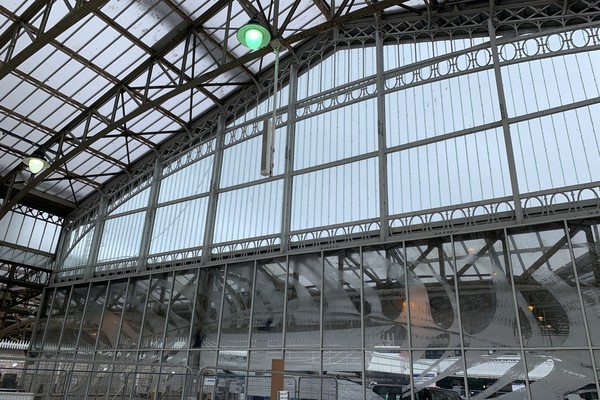
This station was built as a “Union” station for the Caledonian, Great North of Scotland and North British Railways and opened in 1916, It was designed by JA Parker and features a large almost enclosed concourse, it is listed Grade A. There were North facing terminal platforms which have been lost in the Union St. shopping development. The south facing platforms have been reduced to 4. There are also 2 through tracks. A recent and welcome development has been the reinstatement of glass into some of the canopies which had been reduced to frames only. These are entered for the NRHA competition this year.
A further scheme is being developed to increase retail at the station. The rail infrastructure north of Aberdeen is a pale shadow of its former extent but a significant investment is being put into the line to Inverness and a regular more frequent service has been introduced between Montrose and Inverurie to serve the regional market.
The railway to Ballater was closed in 1966 but the chateau style station at Aboyne still exists. At Ballater the wooden station caught fire recently but it has been lovingly restored complete with Royal Waiting Room. When Princess Anne presented the prizes for the 2019 competition with one recognising the Ballater restoration HRH told us that she had had a coffee there.
Montrose
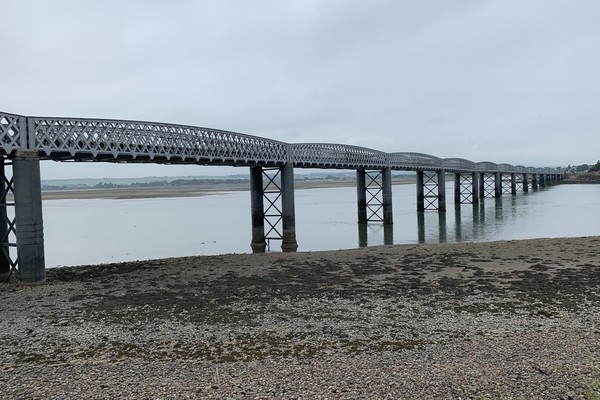
Montrose is on the mainline to Aberdeen and features a 477 yard long bridge over the River Esk. It was designed by Thomas Bouch and was opened in 1880. It was recently restored and again has won an NRHA prize this year. The station at Montrose is modern but the old station house exists as a private dwelling.
Larne Harbour
A modern rebuild which at least retains direct ship to rail access.
Troon
This is another James Miller design in 1892 for the Glasgow and South Western Railway. Most unfortunately the buildings on one platform burned down on July 17 so it is one to be restored. It is listed Grade B and is adjacent to the Golf Course.
Plockton station has been adapted as a bunkhouse. It was designed by the Chief Engineer of the Highland Railway Murdoch Pattersonin 1894 when the railway to Kyle of Lochalsh.
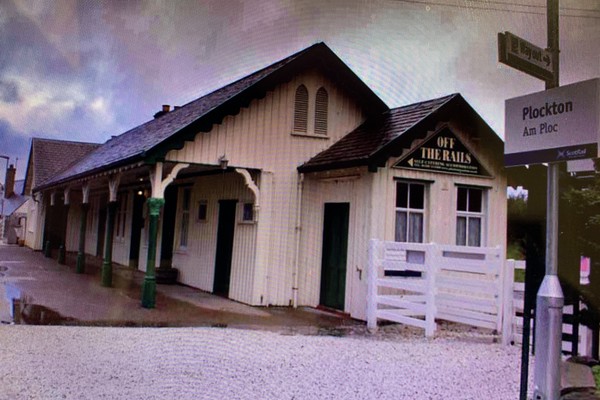
Attadale is one of the relatively rare request stops on the railway and was used by 1228 passengers in 2019 -20 - the train stops if you put out your arm!! Paul Merton visited it on his programme. One nearby station Duirnish was officially closed from 1964 to 76 but was stopped at by request by the staff - so eventually it was reopened officially, I think that is unique!!
The railway from Attadale to Kyle of Lochalsh is one of the most beautiful in the UK and is immediately adjacent to Loch Carron in places
There are 4 trains in each direction per day and a ride is recommended!






